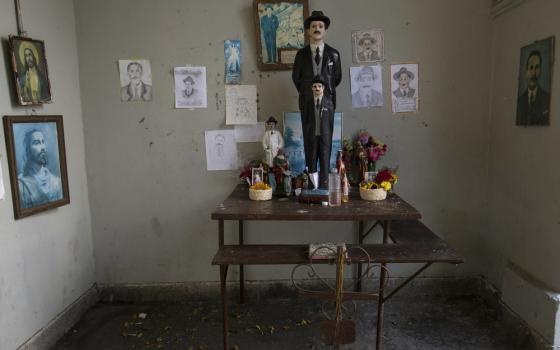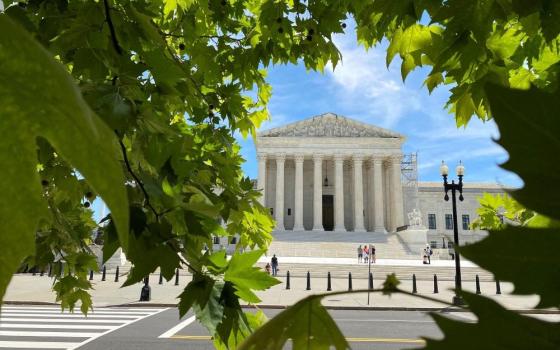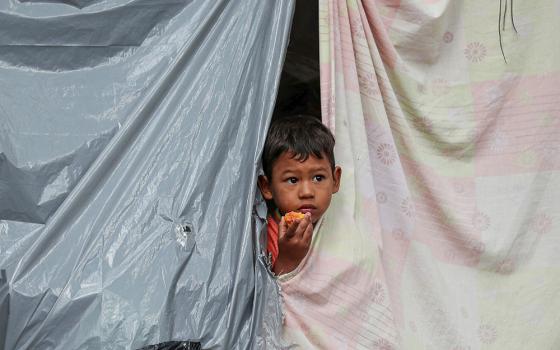One week ago today, behind-the-scenes alarm was percolating among American diplomats in Rome and in the Vatican, as word spread that the first major wave of “Wikileaks” revelations about U.S./Vatican relations would run the next morning.
By midday Saturday, it became clear that this first round of leaks would be more a whimper than a bang.
At the big-picture level, we learned basically zilch about the Vatican we didn’t already know. It’s no surprise, for example, that the Holy See is concerned with protecting its sovereign immunity in sex abuse cases, and we hardly needed a leaked cable to make the point; the numerous motions filed in American courts already sufficed. Likewise, it’s no shocker to learn that the Vatican isn’t fond of Hugo Chavez, or that it favors efforts to combat climate change, or that it sees Poland as a potential counter-weight to secularism in Europe, or that it wants Turkey to be more friendly to its Christian minority.
Even when the cables add new details, they mostly fill in a picture that was already clear.
For example, if someone had ever asked me how the Vatican might react to American overtures to help beef up its counter-terrorism operation, I would have predicted the response would be mixed. On the one hand, they realize the threat from groups such as Al Qaeda is no joke. On the other, they would be hesitant to wrap themselves too much in the American flag, in part because doing so might make them an even bigger target.
We now know that’s more or less exactly how Domenico Giani, the head of the Vatican gendarmes, reacted in 2008 to a U.S. proposal to conduct a “crisis management tabletop exercise.” Giani was apparently open to the idea, but remained “reluctant to engage in a comprehensive dialogue with the United States about Vatican capabilities and preparedness,” in part due to “the Holy See’s sensitivity about being seen to be too close to any one state.”
To be sure, the cables are still worth a read, as there are nuggets to be gleaned.
For instance, a 2004 cable reports that the Vatican pressed the United States to emphasize the scientific argument for adult stem cell research -- reflecting a realistic assessment that moral objections to the use of embryonic stem cells are likely to be less effective in moving opinion. A 2006 cable after a trip by Benedict XVI to Spain shows unnamed Vatican officials criticizing the Vatican spokesperson at the time, Spanish layman Joaquin Navarro-Valls, for playing up a conflict with Spain’s Socialist Prime Minister. We even find a Vatican official in 2010 urging the U.S. government to try to keep phone rates in Cuba low, on the grounds that ease of communications would accelerate the process of political reform.
On the whole, however, such insights fall into the category of “interesting but not game-changers,” as they don’t fundamentally alter perceptions of Vatican priorities or its internal culture. (Insiders already knew, for example, that some Vatican officials resented Navarro’s independence, which is why they’ve put his successor, Jesuit Fr. Federico Lombardi, on a tighter leash.)
One note of caution: The story is not over. According to a published index of the full body of 250,000 leaked cables Wikileaks has received, some 800 deal with the Vatican, with roughly 700 of them originating from the U.S. Embassy to the Holy See. To date, sixteen of those cables have been posted on the Wikileaks web site, and a handful of others have been provided to select media organizations. Other cables are likely to appear in coming weeks, and it’s possible some could contain more explosive revelations.
* * *
While we await round two, here’s something nobody yet seems to have said out loud, but which deserves to be put on the record: Based on the cables we have seen so far, Americans ought to feel reassured that their tax dollars which fund the U.S. Embassy to the Holy See aren’t being wasted.
Both the quantity and the quality of the analysis expressed in these documents are often impressive -- in some cases, reading like newspaper essays from some of the better Vaticanisti on the beat. (Granted, that may be where embassy personnel got some of this stuff in the first place, but they still packaged it well.)
In 2001, for instance, the embassy correctly predicted that “the Vatican will not support our efforts in Iraq,” foreshadowing the Holy See’s opposition to the U.S.-led war in 2003. A 2004 cable accurately flagged then-Cardinal Joseph Ratzinger’s opposition to Turkish membership in the European Union as a personal opinion rather than a harbinger of a policy shift, a reading which has remained valid even after his election to the papacy.
A 2006 cable ahead of Benedict’s visit to Poland, the second foreign journey of his pontificate, is actually one of the best backgrounders on a papal trip you’ll ever read.
On the subject of Polish influence in Rome, the cable correctly anticipates that although the Polish footprint would decline in the post-John Paul II era, Poles will remain important players because they’re now “part of the culture” at the Vatican. It’s commendably sober in noting that although Benedict XVI’s choice as theologian of the papal household comes from a politically prominent family of ultra-nationalists in Poland, that’s probably not why he got the job. (In fact, Fr. Wojciech Giertych was tapped more as a Dominican than as a Pole.) It sagely dissects Vatican attitudes towards Radio Maryja, the Catholic radio station in Poland often accused of anti-Semitism and xenophobia. The Vatican would like to see Radio Maryja toned down, the cable explains, but it won’t get directly involved, because Rome sees it as “an internal Polish question” for the local bishops to resolve.
The cable even offers splashes of journalistic color, such as describing one source greeting passing nuns in Polish as he sits at a cafe near St. Peter’s Square telling his tale to American diplomats.
Frankly, the author of the cable spent more time analyzing Polish/Vatican relations than most of us in the press corps who actually made the trip. Reading it, my own first reaction was: “I wish I had written that!”
The cable is signed by the U.S. Ambassador at the time, Francis Rooney.
Similarly, a February 2009 cable in the wake of Benedict’s decision to lift the excommunications of four traditionalist bishops, including one who’s a Holocaust denier, presents a gripping treatment of the Vatican’s PR woes. Scrubbed of State Department acronyms and diplomatic jargon, the writing would be at home in the Atlantic Monthly or the New York Review of Books, full of telling details and insider scoop.
The cable is signed by Julieta Valls Noyes, the current Deputy Chief of Mission under U.S. Ambassador Miguel Diaz at the Embassy to the Holy See.
One especially keen insight: the cable observes that Vatican leaks were much more common during the John Paul years, while Benedict and his team do a better job of keeping the lid on. While officials during the John Paul era rued those leaks, Noyes writes, in some ways they actually helped the Vatican. They provided time for opponents to make their case, and for possible blowback to be considered before decisions were formally announced. Today, that informal feedback loop has been short-circuited, with the result being decreased sensitivity to likely public reaction.
Once again, I found myself feeling a bit of Vaticanista envy, since the cable puts that point more succinctly and elegantly than I ever have.
One can, of course, find fault with specific judgments. For instance, senior Vatican personnel are not quite as technophobic as that February 2009 cable made it sound. I’ve received e-mails from several heads of Vatican offices over the years, I know for a fact there’s more than one Blackberry at that level, and during a recent visit to a Vatican big-wig I actually spotted an iPad on his desk. Even though Benedict XVI has conceded the Vatican should make better use of the Internet, their PR problem is more a matter of structures and a lack of internal coordination, not so much living in the Dark Ages in any literal sense.
To take another dubious point, if the U.K.’s Ambassador to the Holy See, Francis Campbell, actually said that Benedict’s opening to traditionalist Anglicans last year could unleash anti-Catholic violence in England, it should have come with an asterisk that it probably reflected personal frustration more than a realistic assessment of likely consequences.
On the whole, however, these cables reflect a remarkable investment of time and energy by American diplomats to try to understand the Vatican, and an impressive grasp of its basic realities. (What the State Department and other U.S. policy-makers actually do with that input, of course, is another kettle of fish.)
I realize it’s embarrassing for diplomats to have their private judgments and confidential exchanges rolled out in public, and it may have a short-term chilling effect on their relations with some Vatican officials. Still, the other side of the coin is that the leaks also expose some pretty solid work.
Finally, before anybody in the Vatican gets their noses out of joint, they ought to recognize that one consistent thread in these cables is the Vatican’s importance on the global stage and the value of high-level U.S. engagement. Given that some voices in the United States and elsewhere periodically question why secular governments take the Vatican so seriously, that ought to cement impressions of the U.S. embassy as a friend.
(In the interests of full disclosure, I’m quoted by name in one of these cables. That, however, is the last reason anybody should be impressed.)
[After this column was posted, more cables became available. For an update, see New Wikileaks docs show U.S. pressing Vatican on Iraq, GMOs.]
* * *
Now for two recent vignettes from the road, which, like the nuggets from the Wikileaks cables, are sort of charming, but don’t really add much to what we know.
Last Friday I was briefly in the Papal Apartment, watching Benedict XVI receive a visiting head of state. Those occasions are generally the only opportunity members of the press have for “face time” with the pope, aside from brief sessions with the media on the papal plane during foreign trips.
There’s almost nothing less edifying than reporters trying to offer armchair medical diagnoses, so I’ll skip any observations on Benedict’s health. What I can say is that having covered the twilight of John Paul’s papacy, I have a sense of when the pope’s inner circle is concerned, and I don’t pick up that vibe.
 After the visiting VIP departs, the journalists usually are given a chance to greet the pope. That was the case on Friday, as the pope’s personal secretary, Monsignor Georg Gänswein, waved us forward.
After the visiting VIP departs, the journalists usually are given a chance to greet the pope. That was the case on Friday, as the pope’s personal secretary, Monsignor Georg Gänswein, waved us forward.
Although I’ve met Benedict numerous times, I’m also aware that popes meet a staggering number of people, and so I never assume he’s automatically going to recognize me. Thus when I’m introduced, I usually say something like: “Holy Father, I’m John Allen from the National Catholic Reporter and CNN in the United States. You may remember I’ve written two books about you.”
This time Gänswein broke in to say, Sì, conosciutissimo, roughly meaning, “Yeah, we all know who you are.”
It’s one of those moments you tend to chew over after the fact, since it wasn’t exactly clear whether Gänswein meant to be friendly -- along the lines of, “you need no introduction” -- or if he was warning me that they’ve got my number, so don’t try any funny business. For the record, he said it with a smile, so I’m inclined to the former hypothesis ... maybe with a smidgen of the latter thrown in the mix.
* * *
On my way back from Rome, I stopped by the Washington headquarters of the United States Conference of Catholic Bishops on Monday for an interview with a couple of staffers. They were kind enough to invite me to attend their noon Mass, which, as it turns out, was the first Mass at the USCCB celebrated by the conference’s new president, Archbishop Timothy Dolan of New York.
I told Dolan afterwards that I supposed this was the bishops’ conference equivalent of watching a new cardinal take possession of his titular church in Rome.
It was a vintage Dolan performance, full of energy and humor. He stressed how proud he was to be leading the conference, and thanked everyone for their hard work and service to the church. It happened to be the feast day of Our Lady of Guadalupe, and Dolan delivered a brief fervorino about how Mary’s maternal love means we don’t need to be afraid.
“We all have our worries,” he said in his brief homily ... then added with a smile, “mine got a little bigger a couple weeks ago.” That, of course, was a reference to his upset win in the balloting for USCCB president.
While in the building, Dolan made a point of dropping by the various offices and departments of the USCCB, and by the time he was done there was basically no one who hadn’t gotten a handshake or a pat on the back. (I’ve said before that watching Dolan in action, it almost seems that his version of the sin against the Holy Spirit is to leave an un-greeted person in whatever room he enters.)
The mere fact of making the rounds, according to one USCCB staffer, won people over, since nobody remembered any previous conference president ever doing it. The experience offered a reminder that whatever one makes of Dolan on political or theological grounds, he’s undeniably a charmer.
* * *
Earlier this week I published interviews with two major players on the Vatican scene: Cardinal Gianfranco Ravasi, President of the Pontifical Council for Culture, and Archbishop Rino Fisichella, President of the new Pontifical Culture for Promoting New Evangelization.
[John L. Allen Jr is NCR senior correspondent. His e-mail address is jallen@ncronline.org.]



